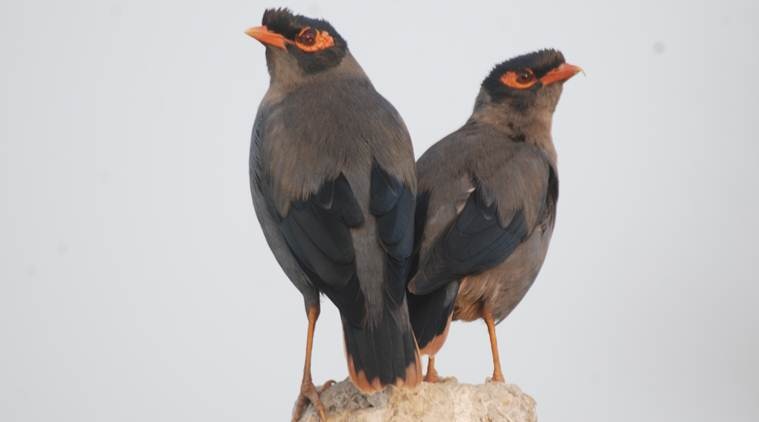 Once, at Gwalior railway station, I realised with delight that the immense din I was hearing was the chattering of bank mynas from their roosts in the station rafters. (Source: Ranjit Lal)
Once, at Gwalior railway station, I realised with delight that the immense din I was hearing was the chattering of bank mynas from their roosts in the station rafters. (Source: Ranjit Lal)
Most of us were taught since childhood to beware of the inhabitants of the animal kingdom. Animals, we were repeatedly told, will, without provocation, kill or maim you. So it’s best to treat them like hostiles and, if you like, jeer at them in zoos.
Most wild animals, of course, have a slightly different point of view. All they want is to get away as far as possible from us, as quickly as possible. Most have been taught by their parents that we mean trouble. This has given rise to what I call animalosity on both sides — and it seems to be growing, considering the mass hysteria generated when, for instance, a leopard visits your washroom by mistake. We want to lynch it, in just the same way a bull elephant will shake his head and thunder after us at the first whiff he gets of us. It’s becoming zero tolerance on both sides. And yes, the animals would have a point if they maintained that it was we who started it by breeding incontinently and invading their spaces.
Yet, so many animals still show an amazing tolerance towards us, once they are assured that we mean no harm. In fact, they show an amazing tolerance towards one another: herbivores of multiple species will graze calmly together, and even ignore a passing predator, once they see that its belly is full. They have sorted it out among themselves as to who eats what, and who eats when, so they can just peaceably get on with their lives. And they’re willing to extend that courtesy to us, too, once we win over their trust. Jane Goodall did it with wild chimpanzees (probably the most highly strung of all apes), the late Dian Fossey with the great gorillas of central Africa, who were slandered as chest-thumping monsters incarnate, and Birute Galdikas with the orangutans of Indonesia. Other researchers have done the same with elephants, baboons, meerkats and a variety of animals. They go out there among the animals, hunker down, make themselves as inconspicuous as possible and watch them — day after day, for months, and, even years.
Suspicious at first, the animals eventually realise that these entities are stubborn and harmless and foolish; perhaps, a part of the scenery. So they are ignored and the animals get on with their normal lives.
Some animals are, of course, almost foolishly trustworthy. There are innumerable stories of dolphins guiding people stranded in the seas to safety. Island animals who have never encountered our species before are horrifically trustful. These peaceniks get sloppy and lose their ability to fight or run, both essentials for survival. And thus, the poor dodo went extinct.
But you don’t have to be an animal lover in order to get close to animals. Millions of ordinary folk have gotten used to monkeys creating havoc in our cities and turn a blind eye to their patently criminal activities. Religious reverence has much to do with it, but whatever the reason, it shows that once the animal knows you mean no harm, it will live its life nicely in your company. Early one morning at Gwalior railway station, I realised with delight that the immense din I was hearing was the chattering of thousands of bank mynas waking up from their roosts in the station rafters! If you regularly feed birds or squirrels in your garden, you may be delighted one day when they perch on your head (provided they don’t crap on it!). Rural children who have been brought up amongst animals will happily perch on the top of a five-ton elephant, or the back of a mighty water buffalo — mutual trust on both sides. Tribals in forested areas may calmly pass by a tiger in the same way you pass by a cow on the road. And then, of course, there are pets who look up to us for everything. (What I am sceptical about are those brawny roughnecks who rear large carnivores and show off by roughhousing with them. This seems more about ego and power, not mutual trust).
In spite of all this, we are warned repeatedly: remember these are wild animals — they can turn violent and unpredictable at any time. Well, look around folks, how many of our great world leaders would fit that bill too?
Ranjit Lal is an author, environmentalist and bird watcher.